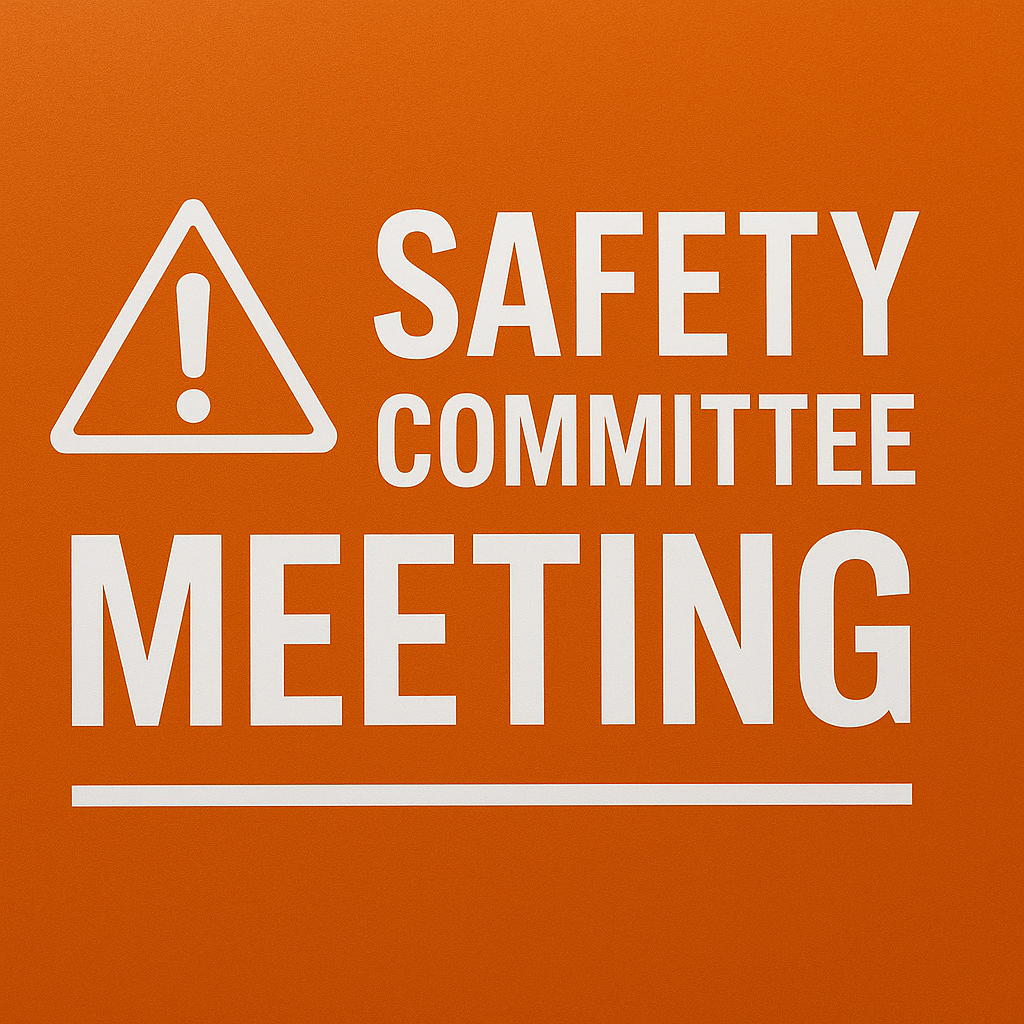The Role of Safety Committees in Reducing Workplace Injuries is more significant than many organizations realize.
Safety isn’t just a checklist—it’s a culture. And at the heart of that culture, safety committees serve as the bridge between management and workers, helping ensure that health and safety isn’t just policy—it’s practice.
From analyzing hazards to implementing corrective actions, safety committees play a powerful role in lowering injury rates and creating a more informed, engaged workforce.

- Why Do Safety Committees Matter?
- Composition of an Effective Safety Committee
- Key Responsibilities of Safety Committees
- How Safety Committees Reduce Injuries
- Tips for Running an Effective Safety Committee
- Common Pitfalls to Avoid
- A Canadian Example: The Joint Health and Safety Committee (JHSC)
- Final Thoughts
Why Do Safety Committees Matter?
Workplace injuries continue to impact productivity, morale, and bottom-line costs. According to WorkSafeBC, thousands of incidents are reported annually—many of which are preventable with proactive safety measures.
Safety committees help:
- Identify and control hazards before accidents occur.
- Create two-way communication between frontline workers and management.
- Track trends in injury reports or near-misses.
- Develop training and awareness programs tailored to site-specific needs.
With proper support, they become the backbone of a strong OHSE program.
Composition of an Effective Safety Committee
A well-rounded committee should include:
- Employer representatives (supervisors or managers)
- Worker representatives (from different departments/shifts)
- OHSE personnel (internal or external advisors)
- Optional: Union reps, HR, or specialists (e.g., ergonomics, chemical safety)
A balanced mix ensures that all workplace perspectives are heard, especially when dealing with site-specific hazards.
Key Responsibilities of Safety Committees
1. Conduct Regular Workplace Inspections
Routine safety audits help uncover:
- Slippery floors
- Missing machine guards
- Poor lighting
- Blocked emergency exits
The committee should document findings, assign actions, and follow up.
2. Review and Investigate Incidents
Every incident—even near-misses—offers a learning opportunity. The committee should:
- Review injury and illness reports
- Conduct root cause analysis
- Recommend corrective actions
- Monitor implementation and effectiveness
3. Develop and Promote Safety Policies
Whether it’s updating PPE rules or introducing a new emergency evacuation plan, safety committees:
- Draft policy recommendations
- Ensure compliance with OHSA/CCOHS standards
- Communicate updates effectively
4. Provide Safety Education and Training
The committee should help plan:
- Safety awareness weeks
- Toolbox talks
- Hands-on training
- Orientation for new workers
This fosters a shared responsibility for safety and empowers workers to be proactive.
How Safety Committees Reduce Injuries
When functioning properly, committees create a feedback loop that continuously improves safety performance. Here’s how:
| Function | Impact on Safety |
|---|---|
| Inspections | Early detection of hazards |
| Incident Reviews | Prevent repeat accidents |
| Policy Input | Practical, enforceable rules |
| Worker Involvement | Better reporting and compliance |
| Data Analysis | Predictive prevention strategies |
Research by CCOHS shows that active safety committees reduce lost-time injuries by up to 30%, especially when combined with senior management support.
Tips for Running an Effective Safety Committee
- Meet monthly or quarterly, depending on risk level.
- Keep detailed minutes of each meeting and distribute them.
- Set measurable goals (e.g., reduce slips by 20% in 6 months).
- Use a rotating chair or leadership model to increase engagement.
- Celebrate safety successes to maintain momentum.
Common Pitfalls to Avoid
Safety committees fail when:
- They lack management support.
- Meetings are irregular or poorly documented.
- Worker voices are ignored.
- Actions are delayed or not enforced.
- Safety becomes a box-ticking exercise.
Avoid these by clearly defining roles, scheduling regular meetings, and treating safety as an ongoing priority—not just a compliance issue.
A Canadian Example: The Joint Health and Safety Committee (JHSC)
In most Canadian provinces, workplaces with 20 or more employees are legally required to have a Joint Health and Safety Committee.
According to OHSA Ontario, JHSCs must:
- Hold at least one certified worker and one certified employer member
- Conduct monthly inspections
- Provide written recommendations to the employer
- Participate in work refusal or critical injury investigations
This structure ensures accountability and provides a legal framework for committee effectiveness.
Final Thoughts
The Role of Safety Committees in Reducing Workplace Injuries goes far beyond compliance. When empowered and engaged, these committees foster a preventative mindset, strengthen workplace communication, and protect lives.
Every organization—big or small—should view its safety committee as a strategic asset, not a procedural burden. With consistent meetings, clear goals, and support from leadership, these teams can transform a reactive safety culture into a proactive one.


No comments yet